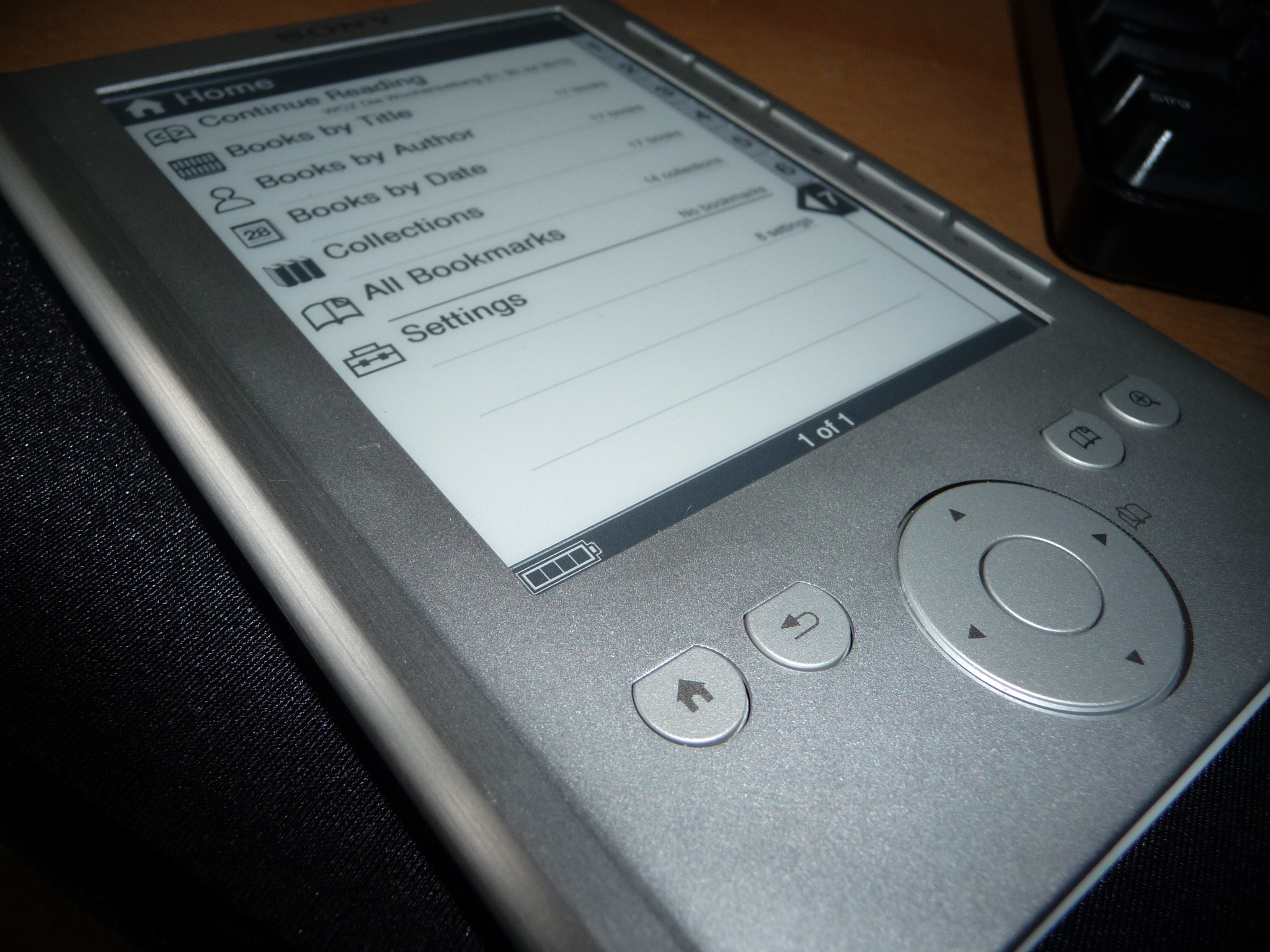There’s one issue in my home which, when mentioned, often turns into a heated debate: the “books vs. e-books” dilemma.
I’m on the digital side – typing and researching away on my laptop right now as my wife finishes reading a paper book on the neighbouring sofa. It’s not always so clear-cut, and we try to see one another’s points most of the time, but it’s become clear that I’m the “bits fan” and she’s the “paper person.”
Today, I want to convince you that at least in language learning, my argument holds water. For this, I’ll be using Amazon’s brand-new toy as evidence. I’ll discuss two simple features, and suggest one tempting conclusion: all you need to re-think how you learn your language.
1. Read more
I remember David Allen‘s suggestion that an organised person should always carry a “reading and reference” folder with herself, to make the best use of these awkward moments of unoccupied time. It made sense – flights, dentists’ waiting rooms and colleagues who are late for lunch are just some examples – but the logistics of this idea didn’t quite add up. Somehow, I didn’t imagine David Allen’s briefcase bursting at the seams with all the relevant material he wanted to read.
Enter Kindle. It holds up to 3.000 books. Three thousand. Or your PDF files. Or mp3 files.
This, for me, is the definition of intensive mobile learning. Being able to revise your notes, catch up on that Spanish novel or listen to a podcast – when you choose to.
Of course, Amazon’s business model assumes that you will want to read more – and pay more for what you’re reading. If you like your Spanish novel, Amazon will be happy to suggest new ones. Whether you approve of Amazon’s money-making ideas or not, you must find it hard to deny that the more you’re able to read, the easier it gets to improve the language you’re learning.
2. Read better
Here’s my pet peeve: I don’t like people writing notes in the books they read. Highlighter pens, scribbles pencilled on the margins – this puts me off reading, and distracts me. There, I’m done grumbling.
When you’re learning a language, though – or learning anything, for that matter – that’s what you want to do. You interact with the book, look things up, mark them to remember or research later, add in your comments. That’s how things get learned, remembered and “owned” by readers.
I think Kindle took notice of that (possibly after Seth Godin’s rant) and introduced the option of taking, storing and sharing notes on books. For an avid foreign language reader, this is pure gold. You come across a new phrase or structure, you look it up (did I mention you can access Google and Wikipedia on the Kindle?), and once you get it – you can note down your own definition or a sample sentence.
3. Flip the classroom
The idea of a “flipped classroom” isn’t new, but for many language teachers and learners, it’s still hard to do. (If you don’t know what a “flipped classroom” is, check here – and watch this video to see a brilliant example)
I’m not saying that Kindle is the only ultimate answer. All I have is these two ideas:
Imagine a class of German learners reading the same book on Kindles. They look up words they don’t know, and make notes similar to the ones described above. They can also share their notes with their classmates – exchanging definitions, sample sentences, marking passages from the text that they particularly liked / disliked / disagreed with, etc. When they come to class, they’d read the book, exchanged some understanding of it – and they’re ready to talk about it face to face, or with their teacher.
Or imagine a learner of Business Chinese, away from his one-to-one tutor for a week. He is able to make his own progress on the documents he’s been dealing with, mark the passages that baffled him, and exchange notes and mp3 files with his tutor, guiding the pronunciation and the interpretation of the whole. This means that his business trip is also a learning experience, and that his next meeting with his tutor can focus more on the conversation and listening.
This is a small, but important step away from the standard model of language teaching, so popular several years ago: you would listen to a 5-minute interview, read a 2-page excerpt, make a few notes in your notebook – and then you could forget about your language until the next lesson.
Now you don’t have to be without your language lessons, regardless of where you go. It means more options, but also a lot more responsibility on the teacher’s – and learner’s side.
Are you ready to do more stuff with e-readers and your foreign language lessons? If not, what’s stopping you? Let the others know in the comments!
Wiktor (Vic) Kostrzewski (MA, DELTA) is an author, translator, editor and project manage based in London. When he works, he thinks about languages, education, books, EdTech and teachers. When he doesn’t work, he probably trains for his next triathlon or drinks his next coffee.
BRAVE Learning (formerly known as 16 Kinds) is a lifelong learning and productivity blog. If you enjoy these posts, please check out one of my books and courses.
My recent publications, and my archive, is now all available on my new project: PUNK LEARNING. Hope to see you there!

